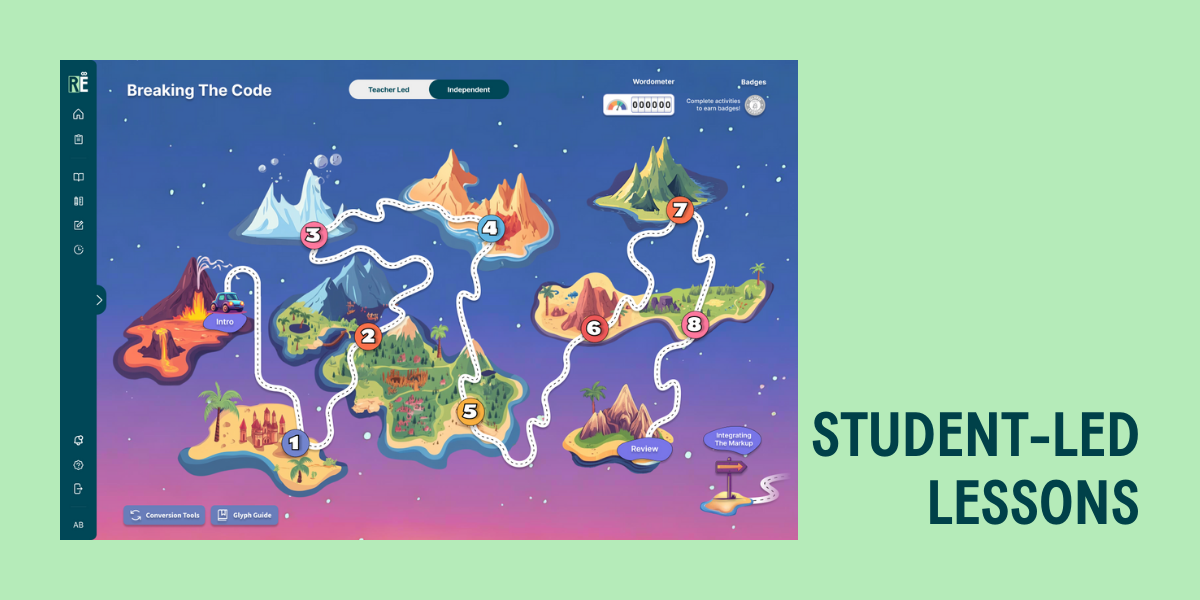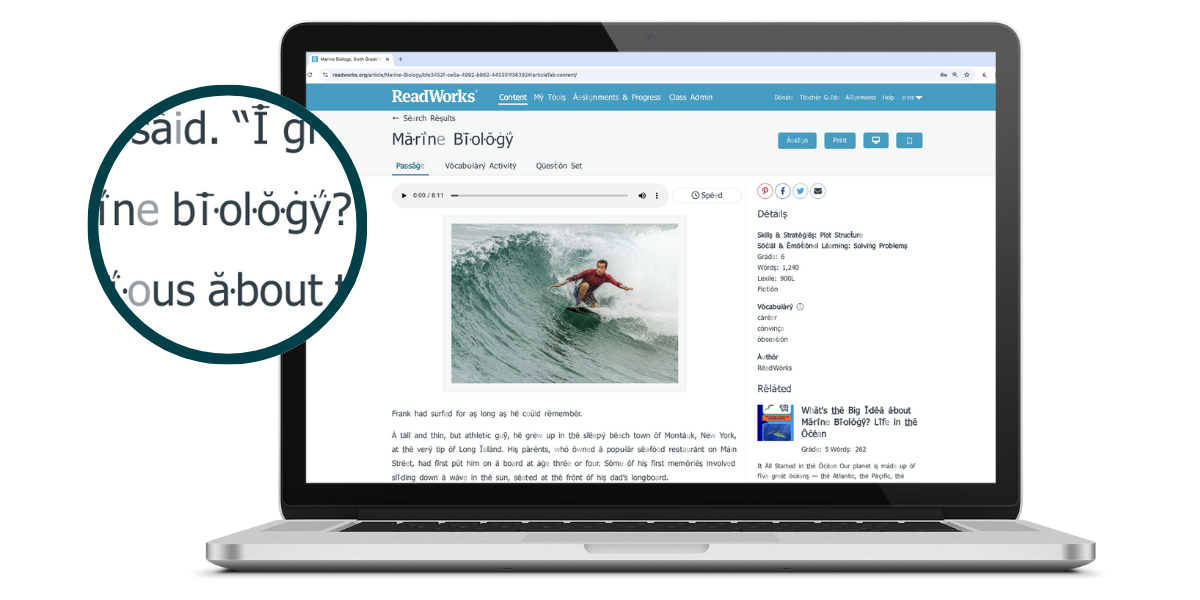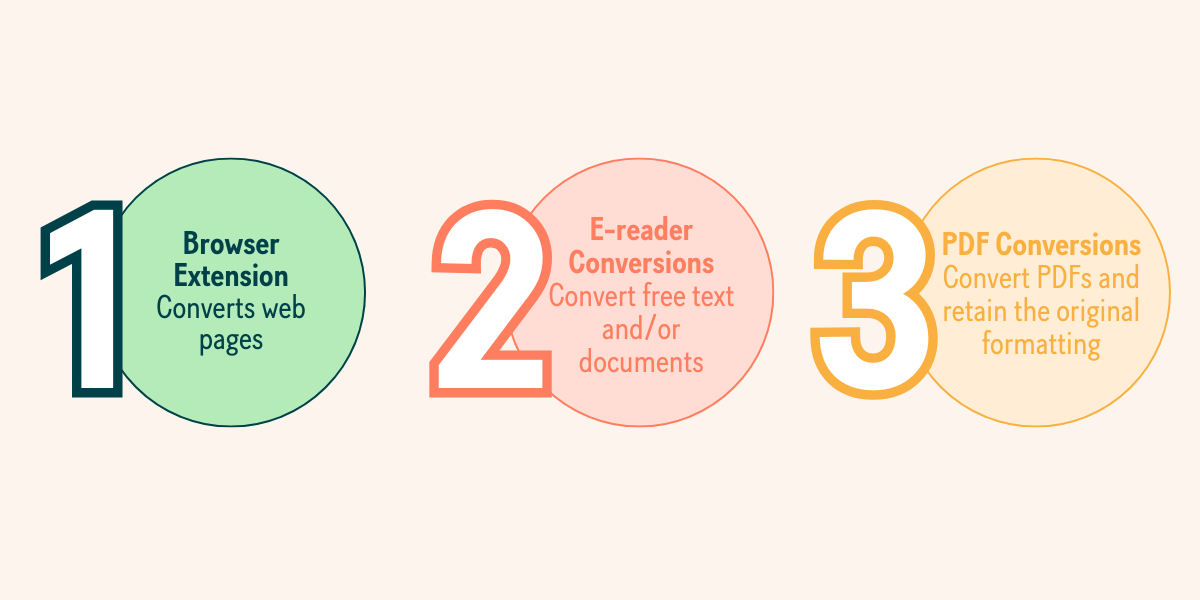Exploring the Student-Led Model of Implementation
Empowering students to take ownership of their learning is one of the most effective ways to foster literacy, confidence, and long-term success. The ...
K-12Discover how Readable English is transforming reading instruction |
PROGRESS MONITORINGEasily assess and monitor growth with data-driven insights and reporting tools |
PROFESSIONAL SERVICESDiscover the services that support your success, from virtual training to expert coaching |
INDIVIDUALSStrengthen your reading skills with an interactive app tailored to your learning needs |
PARENTSEmpower your child's reading journey with an interactive app and expert strategies for home support |
|

|
Rethinking Reading: How One District Transformed Instruction (SmartBrief)Discover how a bold shift in reading instruction helped struggling learners thrive - and the critical role Readable English played in their success.
|
RESEARCH & RESULTSExplore peer-reviewed studies and real-world case studies on Readable English in action |
BLOGExplore articles on feature highlights, research deep-dives, and the latest literacy insights |
EBOOKDownload the ebook Why Learning to Read English is So Hard and how to Make it Easier |
CUSTOMER STORIESDiscover how educators and administrators are transforming literacy with Readable English |
RESOURCE AND PRODUCT ENABLEMENT LIBRARYFind essential educational references and instructional materials to enhance teaching |
FAQSFind essential educational references and instructional materials to enhance teaching |
NEWS & EVENTSStay up to date with media coverage, webinars, and upcoming events featuring Readable English |
|
|
Rethinking Reading: How One District Transformed Instruction (SmartBrief)Discover how a bold shift in reading instruction helped struggling learners thrive - and the critical role Readable English played in their success. |
2 min read
 Anna Boyle
:
Apr 30, 2025
Anna Boyle
:
Apr 30, 2025
Guiding students to become independent readers means helping them learn to self-correct and recognize their own reading errors. This skill is key for building confidence and boosting literacy! With just a few strategic error-handling techniques, you can encourage your students to identify and correct mistakes on their own.
When guiding students, reflect back what the student says and gently question them to help them ‘discover’ the right answer themselves. Remember to praise the parts of their word attack they got right! Below are a few of our Error Correction Techniques and how they can make a difference.
Even with the Readable English markup, it can be common for students to revert to old reading habits, like guessing at words. Encourage them to use the Readable English mark-up with unfamiliar words to build accuracy and confidence. These methods should be reinforced any time they’re doing reading practice to make self-correction a natural part of their reading process.
Below are examples of common reading mistakes and how to guide students toward self-correction:
Ignoring Glyphs: For example, if a student reads “lack” instead of “lake,” guide them to self correct. “Good job on the first and last sounds of that word! When I hear you say “lack”, I hear the letter ‘a’ saying its standard sound, but I see a glyph on it telling it to make a different sound. What sound does the Hey April glyph make?”
Missing Silent Letters: If a student reads “g-nome” for “gnome,” again, reinforce what they got right then point to what needs correcting. “I like how you remembered the Dome sound. I just see a grayed out letter at the beginning and what do we know about letters that are grayed out? Exactly, they’re silent. See if you can read the word now with a silent ‘g’.
Ignoring Syllable Breaks: Help students break down multisyllabic words by using their fingers to read one syllable at a time. Have them cover the letters after the first syllable and read it before uncovering the next syllable and so on. Then, once all syllables are read, have them read the entire word.
Another idea is to point out different multisyllabic words on a page and have students identify the number of syllables by counting the syllable breaks.

Using affirming phrases like, “It’s okay to make mistakes; that’s how we learn! Let’s go back and try again,” helps create a supportive environment where students feel encouraged to keep trying. You can also ask questions like, “When you read that, did it make sense to you? Should we keep reading if something doesn’t make sense, or should we go back and figure it out?” By modeling this thought process, you teach students to pause, reflect, and double-check their reading whenever something feels off.
Helping students recognize and correct errors on their own is a powerful way to foster independence in reading. Using questions to guide students to discover and correct their own mistakes helps foster a “growth mindset”. Try out these strategies and see how they can transform your students' reading skills!
Happy teaching!
The Readable English Team

Empowering students to take ownership of their learning is one of the most effective ways to foster literacy, confidence, and long-term success. The ...

We are living in a golden age of educational technology. Tools like Magic School are using artificial intelligence to tailor and generate classroom...

At Readable English, we want to make reading and understanding content as simple as possible. That’s why we’ve created three powerful conversion...